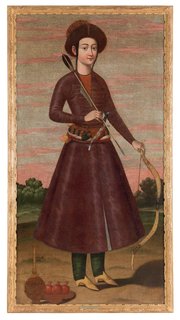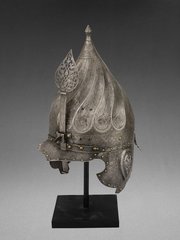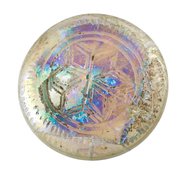
Fountain Head (so-called 'Doha Hind')
Museum of Islamic Art
- Title:
- Fountain Head (so-called 'Doha Hind')
- Production place:
- Cordoba
- Date:
- 940 - 960
- Period:
- Umayyad of al-Andalus
- Title:
- Fountain Head (so-called 'Doha Hind')
- Production place:
- Cordoba
- Date:
- 940 - 960
- Period:
- Umayyad of al-Andalus
- Material:
- Copper alloy
- Technique:
- Casting, Engraving
- Dimensions:
- 56.4 × 40.9 × 12.4 cm
Cast initially from one piece of bronze – made by the ‘lost wax’ technique – this female deer (hind) stands with its head raised, resting slightly on its haunches, and with pointed ears, oval-shaped eyes, and a gaping mouth. The entire surface of the animal is incised with a repeated pattern of half-palmettes within circles, with a plaited mane and raised eight-rayed star motif in the center of its forehead.
The opening of the hind’s mouth suggests its function as a fountain head, with water being forced up through a pipe into the figure’s base and body, then spouting from its mouth. This fountain head would have stood beside a basin or pool in a palatial setting in Umayyad Spain. Indeed, similar examples have been found in the ruins of the palace of Madinat al-Zahra, near Cordoba, as well as the famous fountain of the Court of the Lions in the Alhambra, Granada.



